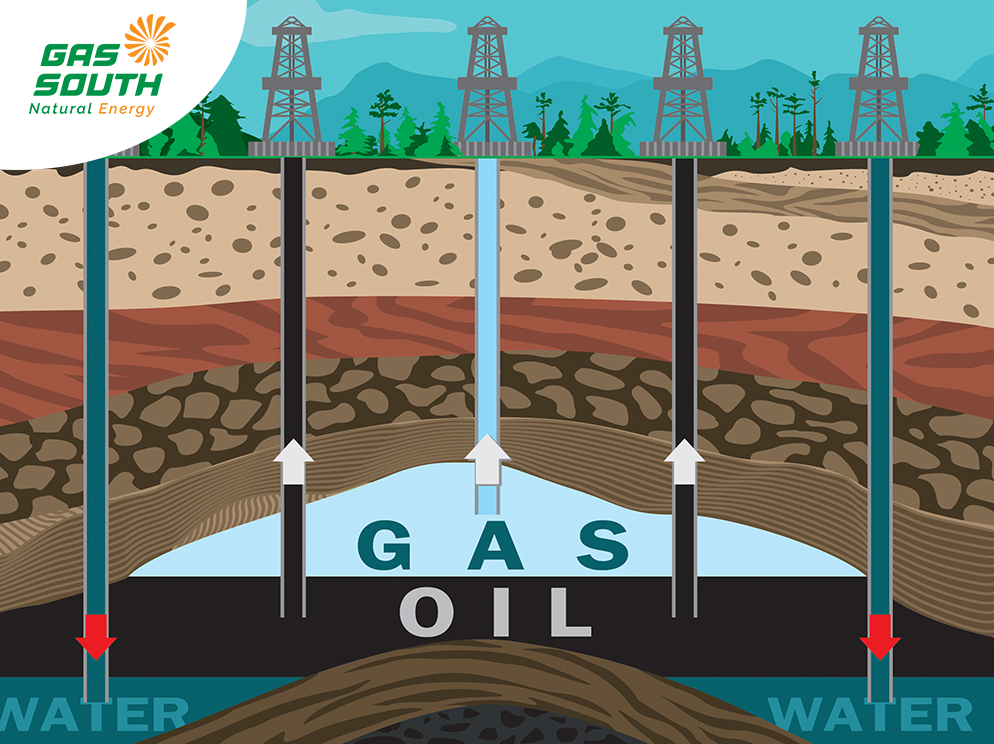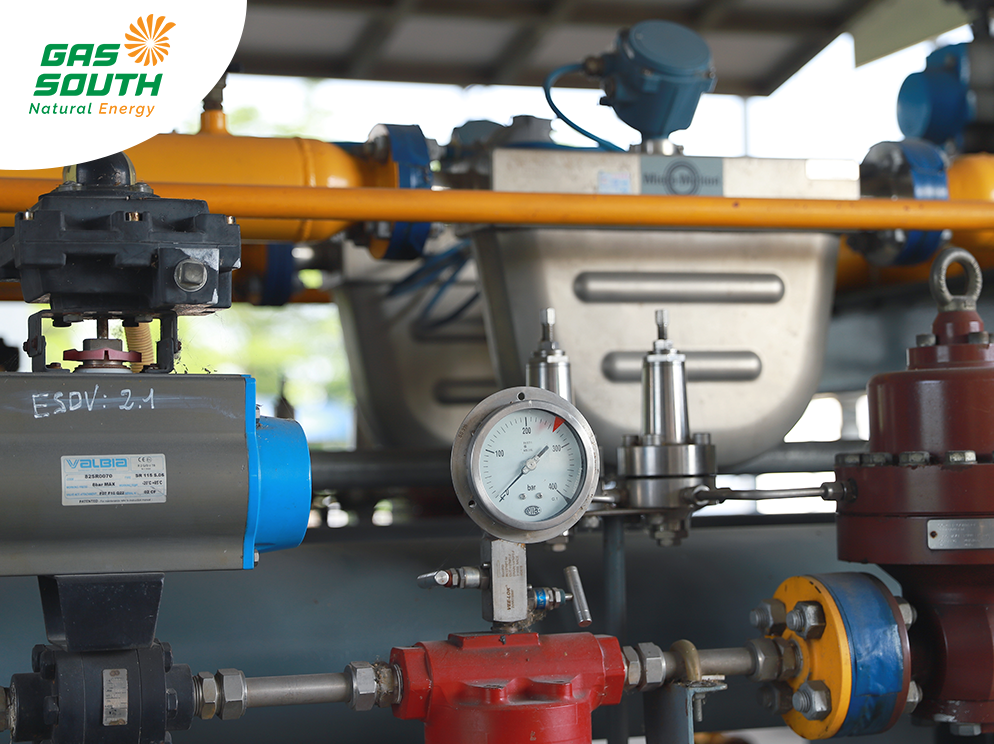Natural gas is a kind of fossil fuel, which is cleaner than conventional fuels such as coal or oil. Safe and eco-friendly features are the reasons for an increase in the exploitation of natural gas and consumption commonly in industry, trade, and households. So where is natural gas extracted from? To clarify that question, we will discuss it in the following paragraphs.
1. The formation of natural gas
Natural gas is a kind of fossil fuel such as coal, petroleum, formed when plankton, aquatic microorganisms die and accumulate on the ocean floor and are buried under sediments. After a million years, the pressure and heat caused by the superimposed layers of sediment on the carcasses of these organisms have transformed these organic elements into natural gas. Petroleum and natural gas are often found together inside natural underground reservoirs owing to their similar formation. Natural gas exists as a mixture of crude oil and natural gas or on top of crude oil in an oilfield.
The primary natural gas ingredients are methane - CH4, accounting for 85%, ethane - C2H6, accounting for 10%, and other gas compounds like propane - C3H8 and butane - C4H10,...

Natural gas is currently found on all continents, except Antarctica, its reserves of about 150 billion m3 globally. In this case, Russia is the nation that has the biggest natural gas reserves, up to 48 billion m3. Following this, Middle Eastern countries with gas reserves of 50 billion m3. The remains are distributed in Asia, Africa and Australia.
Read more: What are difference between natural gas and liquefied natural gas?
2. Natural gas extraction and processing
Nowadays, prospectors locate specific natural gas fields through seismic vehicles or advanced three-dimensional exploration uses to exploit natural gas. After that, they drill vertically through the Earth's crust surface and approach the gas reservoir. Natural gas can be pushed up to the ground by the pressure inside the Earth's crust surface, or combined with pumping air suction. Then, natural gas is transported to the plants by the air duct or transported by the cargo ship.
Natural gas, with large reserves, can exist and be transported in the LNG or CNG form in an effective and safe way. Moreover, CNG is compressed at high pressure ( from 200 to 250 barg) in specialized tanks and transported to consumption places. LNG is liquefied at -162oC, accounting for 1/600 volume that is required for an amount of natural gas in standard condition. Both CNG and LNG take up less storage space and thus save on transportation costs over long distances.

Natural gas is evaluated as a clean fossil fuel and will become the best substitute fuel for traditional fuel. CNG and LNG are commonly used in most developed countries. In the future, natural gas will be the main source of energy, contributing to socio-economic development associated with environmental preservation in Vietnam. Specifically, LNG and CNG are consumed as a substitute fuel for domestic transportation. At present, Gas South is proud of being the best stable fuel supplier with the optimal price for customers. Gas South, with experience and advantages in trading LPG, CNG, LNG, is trusted by large, reputable corporations and brands in many fields such as Pomina Steel, Ton Nam Kim, King Minh, Dong Nai Granite, Samsung,SaigonBus,...





